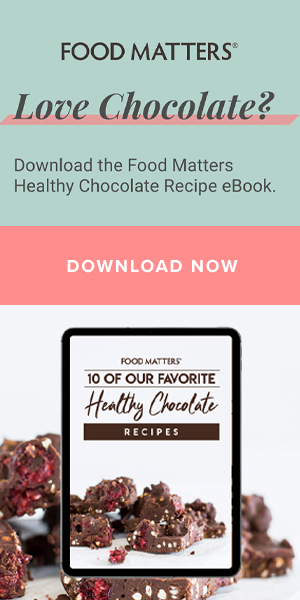What's the Healthiest Way to Cook Eggs?
Firstly, not all eggs are created equal.
And secondly, not all cooking methods maintain the nutritional integrity of their health-promoting essential fatty acids. If you’re not avoiding eggs for allergy or ethical reasons, they can be a powerful nutritional inclusion in your diet. Eggs are a rich source of full-spectrum protein, healthy fats, and micronutrients like iron and B12.
The healthiest eggs to choose are pasture-raised and free-range. This is because the chickens get to eat their own natural diet (including grasses, seeds, weeds, insects, bugs, and more) and move about in a natural way (scratching, roaming, and playing in the sun). This results in healthier chickens and a higher quality egg, rich in omega 3 fatty acids, vitamin E, and beta carotene.
Some other points to consider when buying eggs are sourcing from local farms and looking for your country’s animal welfare organization’s tick of approval. You can discover why this is important in this article, here.
Once you’ve found the right egg, it’s time to master the right cooking method. The key nutritional principle to remember when cooking an egg is to maintain the nutritional integrity of the essential fatty acids (EFA’s) in the yolk, these are the DHA and EPA fats essential for brain and bodily function. These EFA’s are adversely affected by high temperatures which means you should aim to not overcook your yolk.
So no matter how you like your eggs, here’s our guide for cooking perfect, healthy eggs, every time.
Poached
- Bring a pot of water to a rolling boil and add a splash of vinegar (you can use apple cider vinegar if you have it).
- Gently swirl the water with a spatula or big spoon as you crack the egg in. If easier, you can crack the egg into a small bowl beforehand and slide it into the swirling water.
- Cook for 3-4 minutes, or until the white has set. The aim is to have a firm white and soft-to-runny yolk.
Boiled
- Place eggs (still in their shells) into a pot of cold water and bring to a boil.
- Turn on your timer from when the water begins a rolling boil.
- Soft-boiled eggs will only take 3-4 minutes. For a firmer egg, boil for 6-8 minutes.
- Strain the hot water and let cool in cold water for 1 minute. This makes your egg easier to peel and stops it from continuing to cook.
Fried (Sunny Side Up & Over Easy)
- Begin with a small amount of oil, butter, or ghee on the pan over medium-high heat. You can see which cooking oils we recommend here.
- Crack your eggs into the pan and cover with a lid.
- Wait for the eggs to turn a little white, approximately 1 minute, then add a small splash of water (1-2 tbsp) into the pan, and put the lid back on. This will help to steam the bottom without burning and stop your egg from staying gluggy and uncooked on top.
- If you enjoy your eggs sunny side up, add a little more water to the pan until your egg whites are cooked and the yolk is soft-to-runny, about 2-3 minutes. If you prefer over-easy, flip the egg once the white is cooked for a further minute keeping the yolk in a soft-to-runny consistency.
Scrambled
- Start with a little high-quality butter or ghee in a pan over a low-medium heat as you mix your eggs in a bowl with salt, pepper, and any other herbs or seasonings of your choice. Pour your eggs in and constantly mix your eggs - it doesn’t need to be a fast movement, but rather a consistent motion. We suggest using a rubber spatula to scrape down the sides and avoid any damage to your pan while keeping the eggs nice and fluffy.
- Take the eggs off the heat when they’re almost cooked (still slightly runny) and place them back into the whisking bowl (it will gently cook any of the remaining egg in the bowl) as they will continue to cook until you are ready to serve.
Omelet
- Crack eggs into a bowl with a healthy pinch of salt and a good bit of freshly ground black pepper and whisk. We recommend two eggs per person.
- Finely chop your favorite herbs and add them to the eggs. This step is optional but makes the omelet that much more delightful.
- Heat your frying pan on medium heat, and once warm, add butter, ghee, or cooking oil. Allow it to bubble then tilt the pan so it covers the whole surface.
- Slowly pour your egg mixture into the pan and leave them untouched for 20 seconds or so, until it begins to cook.
- Use a rubber spatula or fork to gently pull the sides of the mixture away from the pan, while tilting the pan to allow for the uncooked egg mixture on top to run into the surface of the pan.
- Continue this motion around the pan so the mixture has time to rotate and cook.
- Now leave the omelet to cook until almost set, which should only take a minute or two. You can use this time to prep any fillings and scatter them on one half of the omelet.
- Using a spatula, gently flip the unfilled side onto the filled side and cook for another 30 seconds.
- Remove from the heat and gently slide onto a plate to serve. The aim is that the inside of the omelet should still have a slightly runny to soft consistency to maintain the nutritional integrity of the egg.
Eggs can be incredibly nutritious, when coming from happy, healthy hens and when they’re cooked in just the right way. So crack out the pots and pans and crack open a shell to make the most of this easy addition.










